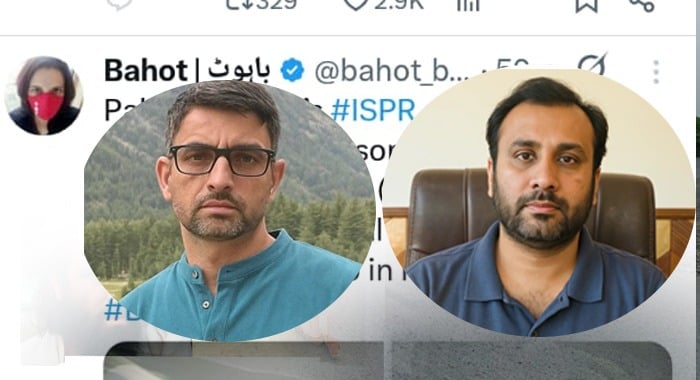A major cyber forensics breakthrough has unmasked a coordinated disinformation network linked to the banned BLA, revealing that prominent X (formerly Twitter) accounts such as Bahot Baloch, Balochistan Facts, and Fatima were in fact digital puppets operated under the direction of Indian intelligence services.
Cyber forensic teams, after analysing patterns and metadata, uncovered layers of deception used to amplify anti-Pakistan narratives under the guise of “Baloch voices.” The viral posts and millions of so-called “views” were not organic support from Balochistan, but rather the work of automated bots coordinated through data centres based in India.
Far from being an underground Baloch journalist, “Bahot Baloch” was exposed as Deepak Negi, a linguistics graduate from Uttarakhand, India. Investigators found that he had studied regional dialects, especially the Baloch accent, to pose as a credible voice for a fabricated online resistance movement.
Activity logs of these accounts show a sharp drop in posting after 6:00 PM IST, coinciding with end-of-day hours for Indian IT operatives. Third-party analytics revealed that 72% of the traffic originated from three major Indian data centre IP blocks, while genuine traffic from Balochistan made up only 0.03%.
Further investigation exposed the identity behind the “Fatima” account as Kuldeep Vishnu, an IT consultant from Haryana, India. Using a fake female identity, Vishnu manipulated content around protests, especially BYC-related demonstrations, to exaggerate their size and impact. The account was first flagged by Old Guard, a Pakistani cyber vigilance group monitoring cross-border digital subversion.
Several indicators pointed to the artificial nature of these accounts:
Unnatural engagement ratios: Whereas real users typically have a 3:1 like-to-reply ratio, these accounts showed spikes as high as 280:1, a classic sign of bot amplification.
Synchronised traffic spikes: Thousands of views appearing at the exact same time each day suggested automated push campaigns, not human behaviour.
Language fingerprints: Despite posing as Baloch or Urdu-speaking, the accounts often drafted posts in Devanagari script, using common Hindi stop words, another giveaway of their Indian origin.
Cross-platform duplication: Identical content posted on X, Facebook, Instagram, and Telegram, often simultaneously, indicated a centralised script-based botnet, not spontaneous activism.
Despite X (formerly Twitter) offering open analytics for public transparency, these accounts have kept their analytics disabled for years under the pretext of being in “development mode.” The reason is obvious: revealing real engagement data would expose the absence of meaningful support from within Balochistan or Pakistan.
Had the actual viewership been made public, the inflated narrative of “Baloch support” would collapse, revealing it to be nothing more than an illusion propped up by fake followers and bot networks.
From Bahot Baloch to Balochistan Facts and Fatima, these accounts are merely recycled actors in a staged script—their real aim not representation, but sustained anti-Pakistan propaganda under different names and faces. The strategy is old: fake identities, bot-driven traffic, and inflated digital engagement to falsely claim grassroots Baloch support.
But now, with mounting evidence of Indian handlers, AI-generated engagement, and coordinated scripts, the facade has finally collapsed.
Despite the digital noise and synthetic visibility, the people of Balochistan have decisively rejected these false representatives. On-ground reality has exposed that these figures do not speak for the people—they serve only external agendas. The fake digital theatre may generate clicks, but it no longer fools those it falsely claims to represent.





